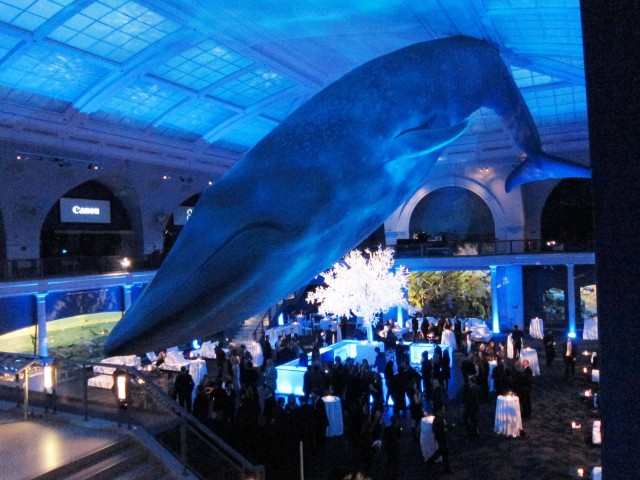Canon Continues Cinema Campaign in City.
Less than two weeks after the dazzling debut of the Cinema EOS C300 camera at Paramount Studios in Hollywood, Canon rolled out the red carpet in front of New York’s Museum of Natural History. It was the premiere of the short film “When You Find Me,” produced by Ron Howard and directed by his daughter Bryce Dallas Howard.
Dale Charbeneau’s 22-page script was based on themes of eight photographs, selected from 96,3632 images submitted in a 22 day competition. The winning photographers were Walter Arnold, Jen Berry, Mikey L’Heureux, Brooke Shaden, Alan Michael Martelly, Lexia Frank, Chris Wehner, and Kelly Shipp.
The short film was shot less than a month ago with Canon’s new C300. This camera is lighter, smaller, faster and different. Around 3 pounds, the size of a medium format camera, the really big deal is the incredible beauty of scenes shot at Exposure Indexes from 320 to 20,000 ISO. This camera lets you focus on the night. While some blogerati are focusing on bits and Ks, the simple question is, “Do you want to shoot noiselessly and grain-free at 16,000 ISO?” Studio heads are taking notice of the C300 because, as one mogul told me, “The dreaded words NIGHT-EXTERIOR no longer mean more expense than DAY-EXTERIOR.”
Sampling short-rib sliders and shrimp on sugar cane skewers in the after-party, I reminisced with Ron Howard about my fledgeling debut as a camera operator and 2nd unit DP with him on “Splash,” filmed beneath the very same Blue Whale in the Hall of Ocean Life.
Ron summed up the enormity of the filmmaking paradigm shake-up during a discussion after the screening. He said that Canon’s new camera is a technology tool that demystifies and democratizes creativity. With Canon’s 70 million EF lenses and 50 million EOS still cameras out there, a new journey in motion imaging is about to begin. One pundit was overheard speculating that Canon had wisely spent more on the Hollywood and New York events than most companies dream of for their entire R&D budgets.
History is on the side of Canon’s choice of the American Musuem of Natural History. Explorer, inventor, sculptor, and naturalist Carl Louis Gregory Akeley was curator at the museum, and invented the famous Akeley “Pancake” 35mm motion picture camera between 1914-1917. Brian Coe wrote (“History of Movie Photography,” 1981), “The Akeley camera had its film chamber carried inside the camera, which had a very distinctive drum shaped body. The film was carried in a single combined magazine; a cylindrical shutter ran around the inside of the cylindrical body. The telescopic finder had a most ingenious optical system which kept its eyepiece in the usual level position regardless of the tilt of the camera.” The Akeley Camera had gyroscopic stabilization, and excelled at filming with long lenses in documentary situations.
Almost a century later, Canon is onto something that may again change the way films are made. Canon’s events in Hollywood and New York were not typical product launches. They were image launches, welcoming a company founded with a rangefinder still camera in 1937 to a new world of digital 35mm format cinematography, and providing aspirational tools for a new generation.









